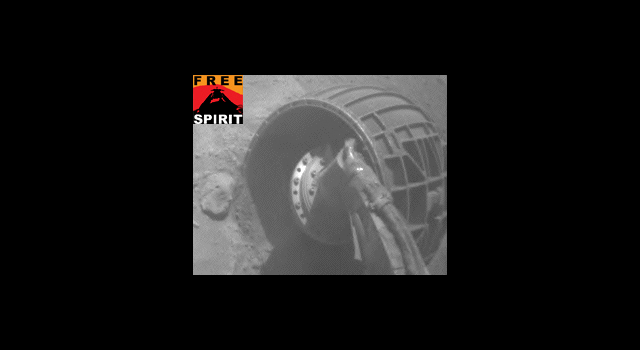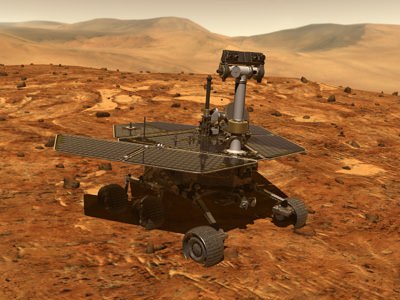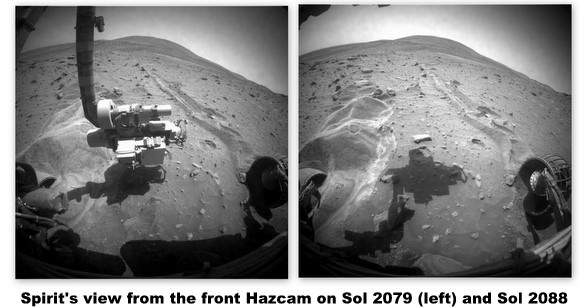Could it be true that the old gimpy wheel on the Spirit rover is making a comeback? The right-front wheel, which stopped operating way back on Sol 779 (March 13, 2006), surprised engineers by indicating normal resistance and turning slightly during a resistance test for that wheel. Spirit, which has been stuck in soft soil for several months, recently got bad news that the right rear wheel also stopped working (Nov. 21), leaving her with just four of six wheels operational. Engineers conducted tests on Dec. 12 and the right rear wheel continued to show no motion and exhibited very high resistance in the motor winding. Just for fun (I’m assuming) engineers also test the right front wheel – the wheel that Spirit has limped with in coming down from the top of Husband Hill and making the trek across Gusev Crater to the Home Plate region where she currently sits. In surprises of all surprises, the old gimpy wheel showed signs of life.
Diagnostic tests were run on Spirit’s right-rear wheel and right-front wheel on Sol 2013 (Dec. 12, 2009). The recently stalled right-rear wheel continued to show no motion. Engineers expected nothing from the right front wheel. The last time it was checked was just after its apparent failure in 2006 and at that time indicated an open circuit. JPL says that although no clear theory for failure had been established, the failure was generally regarded as permanent.
JPL also says it is important to remember that the Sol 2013 test of the right-front wheel was only a rotor resistance test, and no conclusions can be drawn at this point without further testing.
The plan for Spirit on Sol 2116 (Dec. 15) is to command a drive, which will test the functionality of both the right-front and the right-rear wheels. The results are expected Wednesday.
Spirit continues to surprise….stay tuned!




